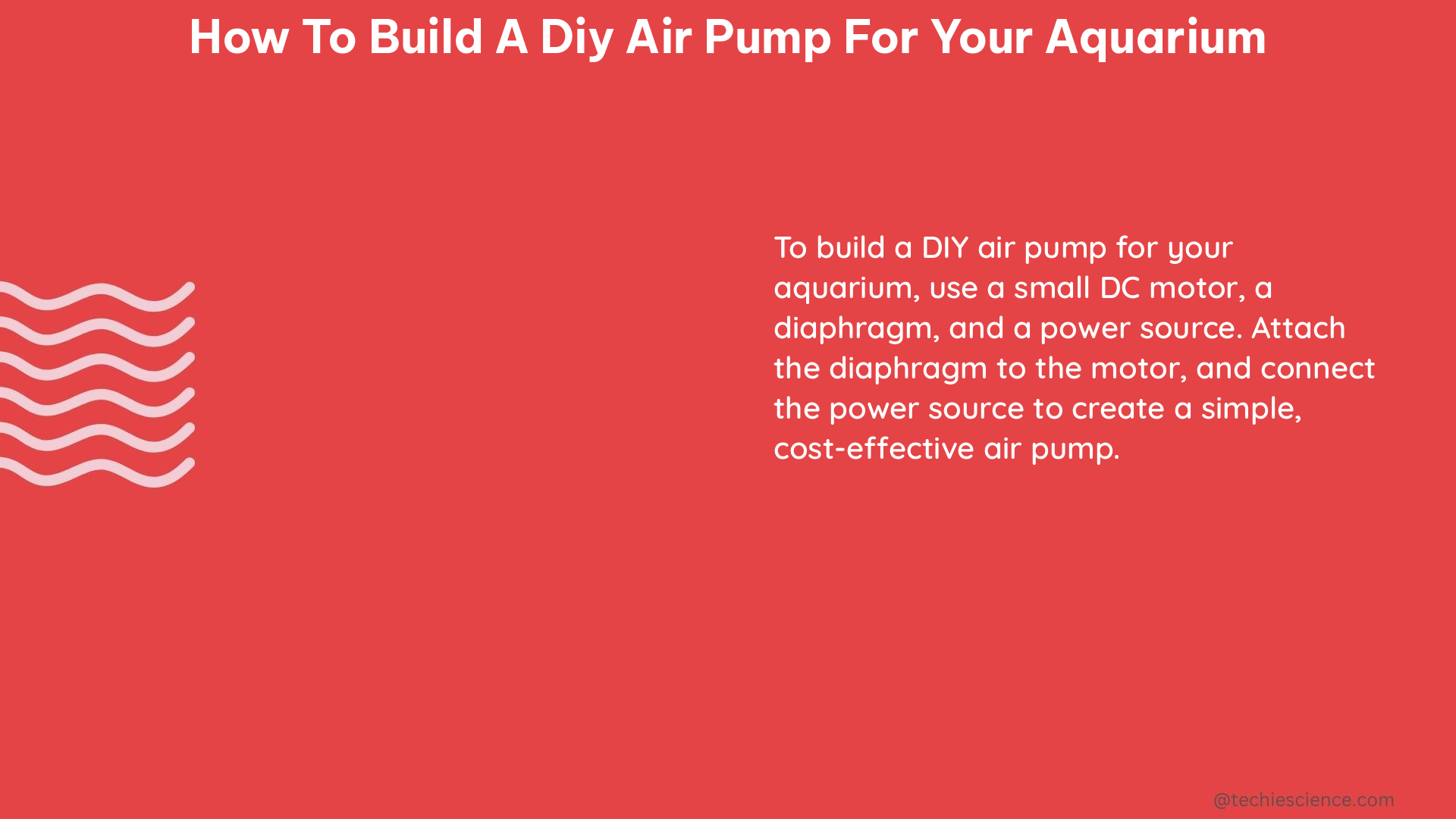Building a DIY air pump for your aquarium is a cost-effective and practical solution to ensure adequate oxygenation of your tank’s water, especially in the event of a power outage. This comprehensive guide will walk you through the step-by-step process of constructing a water-powered air pump using readily available materials, as well as provide technical specifications and measurement techniques to ensure optimal performance.
Preparing the Materials
To build your DIY air pump, you will need the following materials:
- A plastic bottle (preferably a 2-liter or larger size)
- A drill
- A sharp knife or scissors
- A check valve
- Airline tubing
Ensure that all the materials are clean and free of any contaminants before starting the assembly process.
Cutting the Bottle

Begin by cutting the plastic bottle in half, creating two equal halves. This will serve as the main body of the air pump.
Drilling the Holes
Using the drill, create two small holes in the bottom of the bottle. One hole will be for the airline tubing, and the other will be for the water to flow out.
Attaching the Check Valve
Attach the check valve to the airline tubing. This valve will prevent water from flowing back into the pump, ensuring a one-way air flow.
Assembling the Pump
Place the check valve in one of the holes in the bottom of the bottle, and then feed the airline tubing through the other hole. This will create the air intake and output for the pump.
Testing the Pump
Fill the bottle with water and submerge it in your aquarium. The water flow will create air bubbles that can be used to oxygenate the water in your tank.
Measuring the Airflow
To ensure that your DIY air pump is providing adequate oxygenation for your aquarium, it’s important to measure the airflow it generates. According to engineering data, an average adult can take up to 7 liters per minute (L/min) of air while resting. However, the actual airflow required for your aquarium will depend on various factors, such as the size of the tank and the number of fish.
To measure the airflow, you can use a simple method suggested in the Reddit thread Is there a relatively inexpensive way to measure the airflow from an aquarium air pump?. This involves placing a measuring cup upside down over the output of the air pump and collecting the bubbles for a known period of time. Dividing the volume of the bubbles by the time will give you the flow rate in liters per minute.
Technical Specifications
When building a DIY air pump for your aquarium, it’s important to consider the following technical specifications:
- Flow Rate: The air pump should be able to generate a flow rate of at least 4 L/min to ensure adequate oxygenation of the water.
- Depth: The air pump should be able to operate at a depth of at least 80cm to ensure consistent performance in larger aquariums.
- Durability: The air pump should be made of durable materials, such as plastic or metal, to ensure longevity and reliability.
- Ease of Use: The air pump should be easy to assemble and maintain, with clear instructions and readily available replacement parts.
By following these guidelines, you can ensure that your DIY air pump provides reliable and efficient oxygenation for your aquarium, even in the event of a power outage.
Conclusion
Building a DIY air pump for your aquarium is a straightforward and cost-effective solution to ensure adequate oxygenation of your tank’s water. By following the step-by-step instructions and considering the technical specifications outlined in this guide, you can create a reliable and efficient air pump that will keep your aquatic life thriving.
Remember to always prioritize the safety and well-being of your fish when making any modifications to your aquarium setup. If you have any concerns or questions, it’s always best to consult with a professional aquarium specialist or experienced hobbyist.
Happy DIY-ing and happy fish keeping!
References
- How to Make a Water-Powered Air Pump for an Aquarium
- What is the amount airflow needed from aquarium air pump per minute to make a DIY air pump?
- Is there a relatively inexpensive way to measure the airflow from an aquarium air pump?
